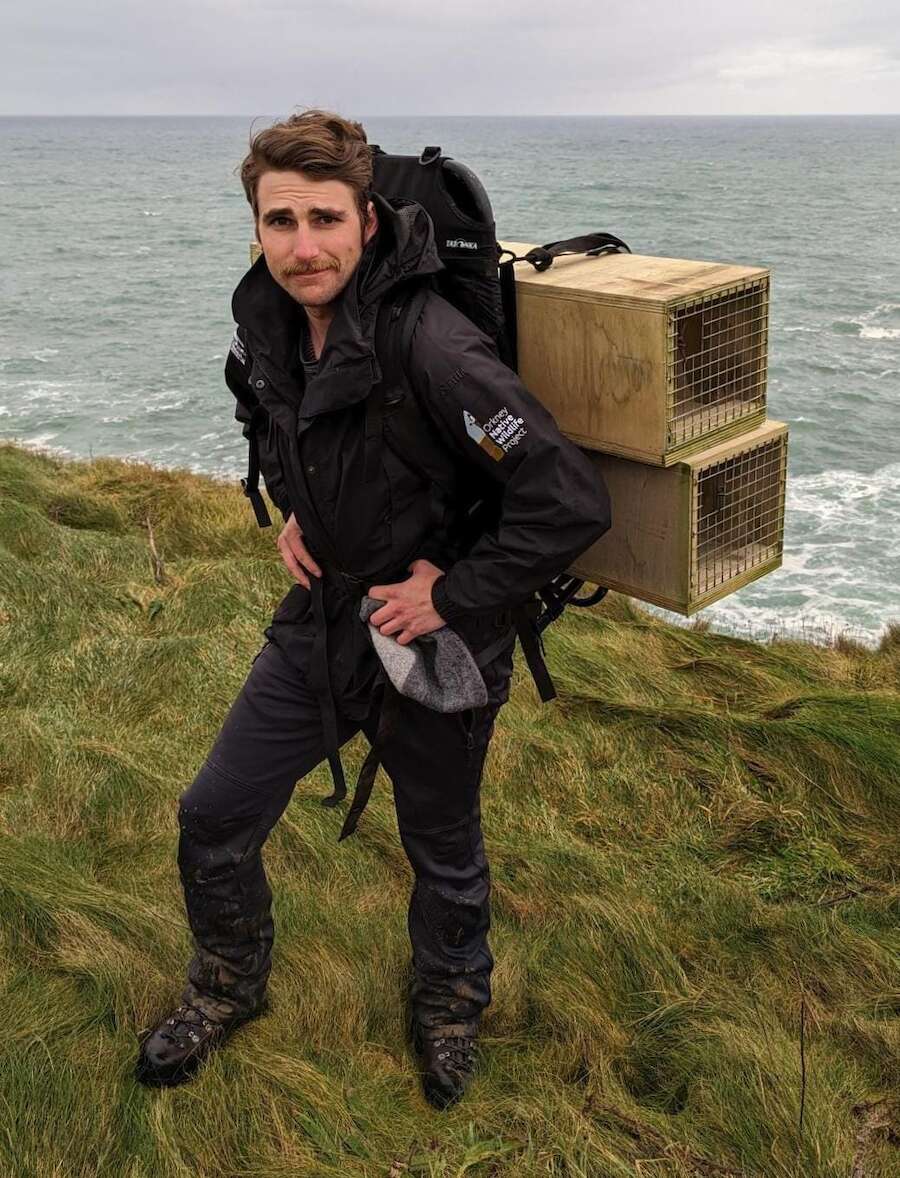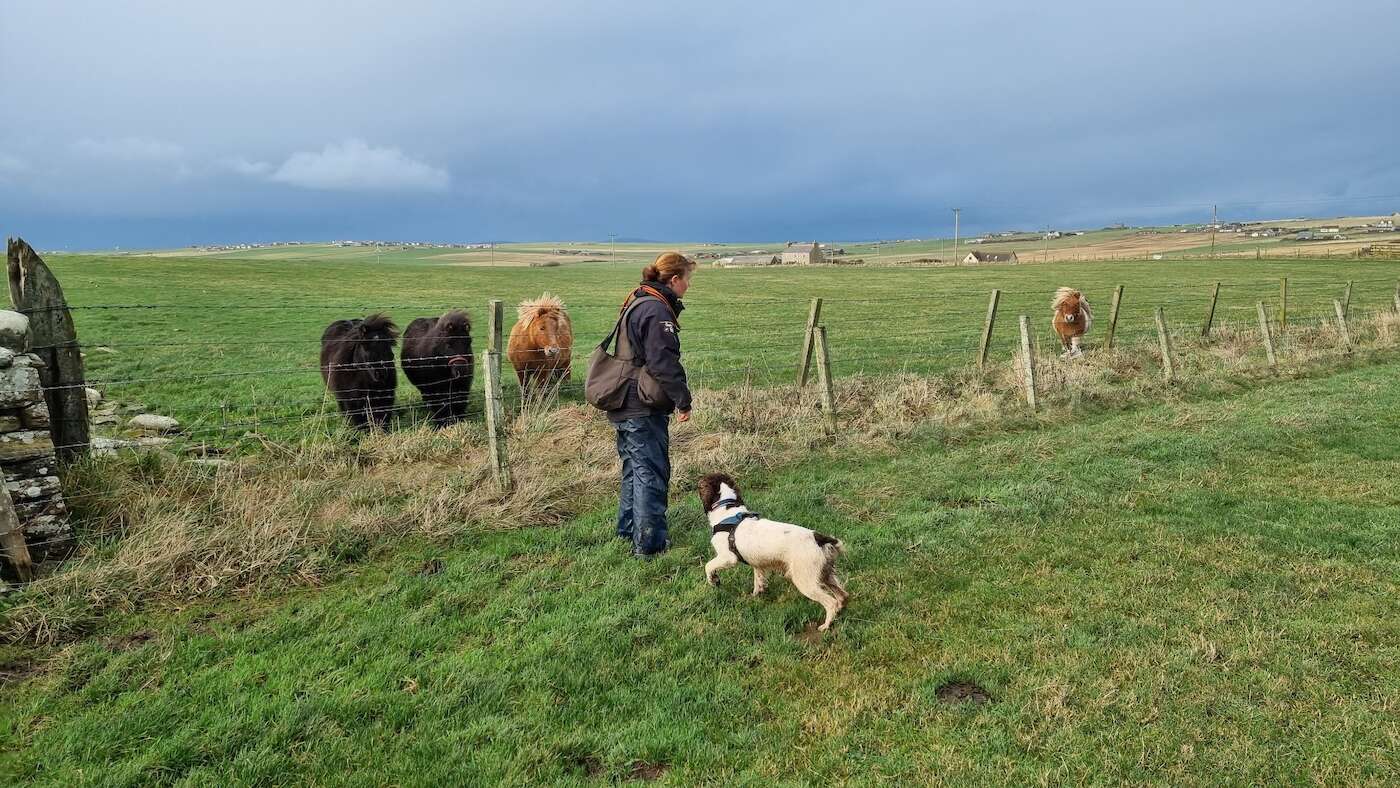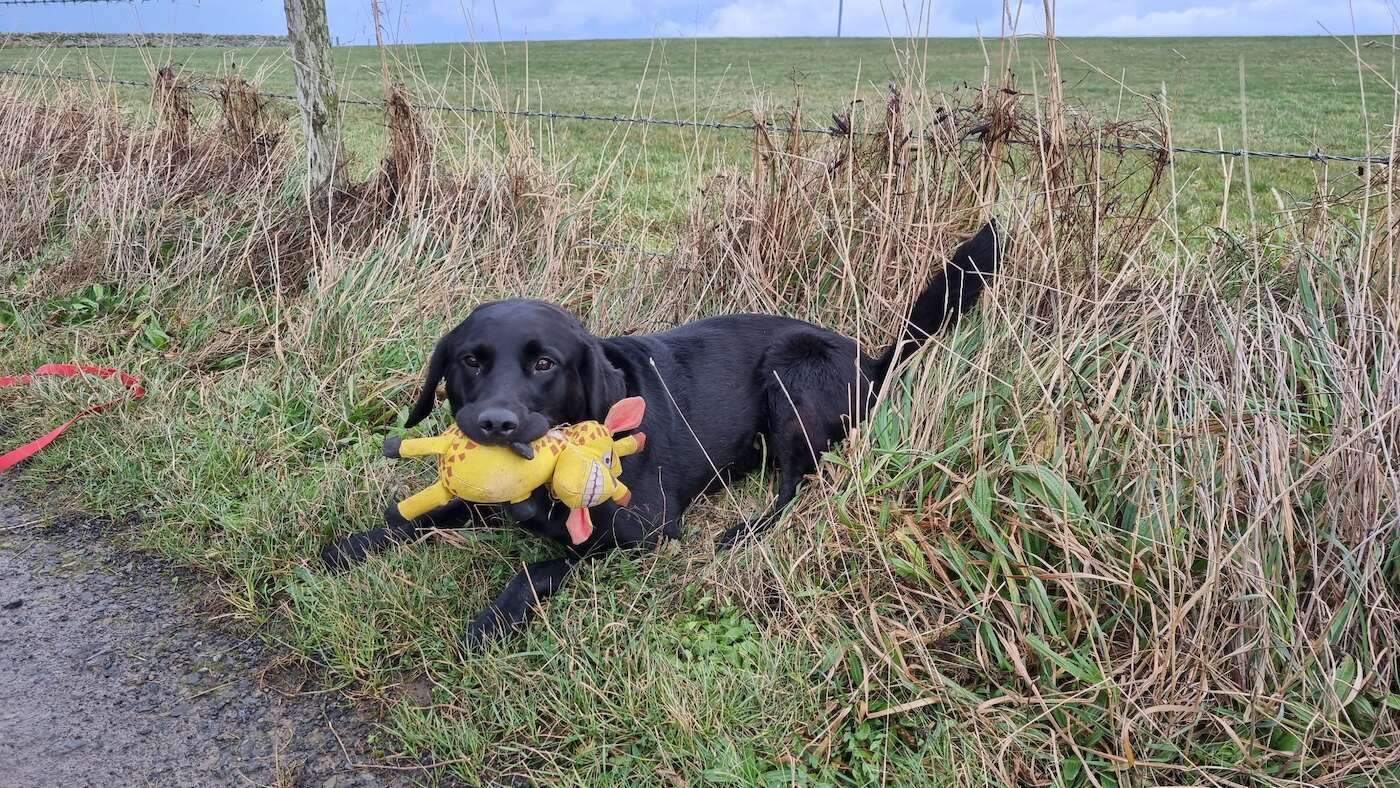Visiting volunteers
Volunteers are such an important part of the team delivering the objectives of the Orkney Native Wildlife Project. A core group of local volunteers are supplemented by visitors and residential volunteers who give us varying amounts of time across the year. Sandie Andrews and Mike Pearce spent ten weeks helping over the summer and here they share the highlights from their time in Orkney.
"Looking for a volunteering opportunity in Scotland, we approached the Orkney Native Wildlife Project to see if we could help with their campaign to eradicate invasive non-native stoats. We arrived in our campervan at the end of April after a spectacular evening ferry crossing past the Old Man of Hoy and had a weekend to explore before our volunteering started.
We were given tasks on the monitoring side of the project and were also asked to assist RSPB Scotland staff with bird surveys. Fortunately, the surveys on steep slopes with dense heather and big ditches were saved for the younger and fitter researchers! Much of our time was spent monitoring and recording the nests of wading birds and after training we were given our own site near Skara Brae. Monitoring involved observation to establish where a nest was located, then, using radio or hand signals and a telescope, one of us would guide the other to the exact location, which was logged on a GPS to help us find it again. The main species of interest were curlew, oystercatcher and lapwing. Nests would be photographed, and the number of eggs recorded.
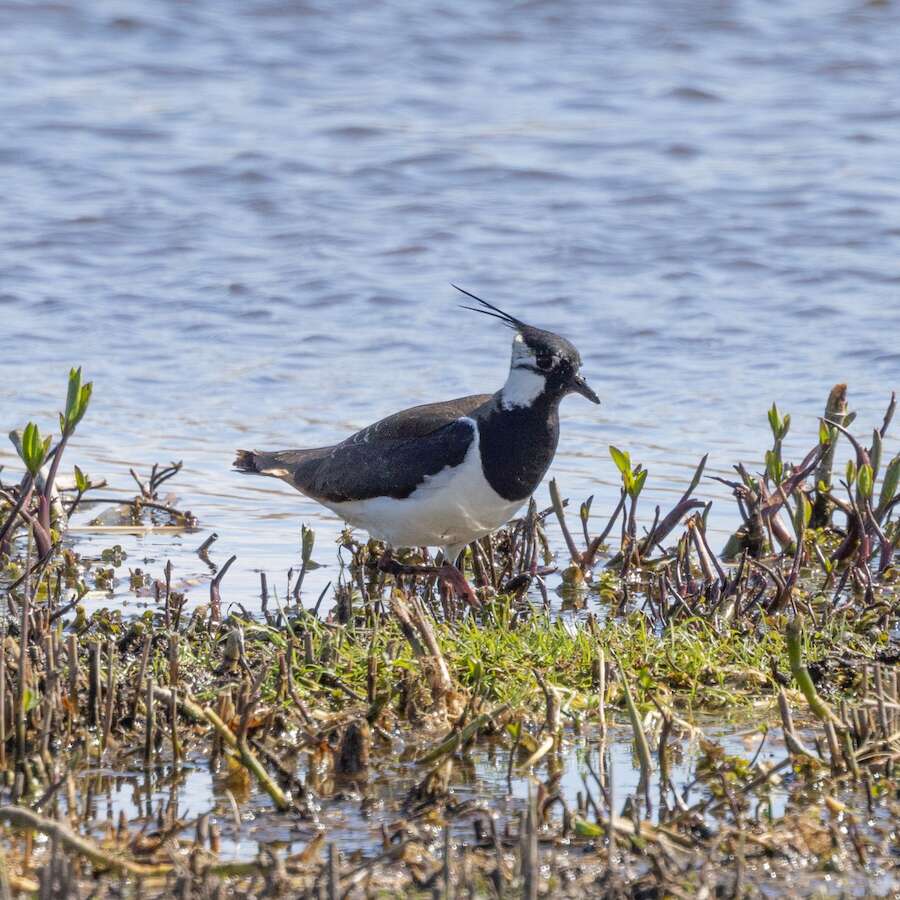
Lapwings were one of the birds that Sandie and Mike were surveying. Credit: Mike Pearse.
When all details were confirmed, we commenced twice-weekly observation and weekly nest visits, if the weather allowed. We didn’t want the adult birds to be off the nest if it was cold and wet, which would risk chilling the eggs. Essential aids for the job included wellies, telescope, GPS and a heavy-duty door mat to help us safely get over the barbed wire fences between fields. Over time, we gathered a record of the nests as they hopefully developed to hatching and fledging (a young bird’s first flight).
Trail cameras were placed at suitable nests to observe development and any predation. Predator numbers certainly increased as the season went on. It was humbling to watch the waders work so very hard at protecting their nests and rearing their chicks. We were constantly reminded how precious and fragile life is and how vital the work undertaken by this project is in trying to protect Orkney’s native wildlife. At every point, in everything that we were involved in, we felt absolutely privileged and humbled at being part of it."
Our thanks go to Sandie and Mike (pictured below) for the many hours of hard work they put in during their time in Orkney.
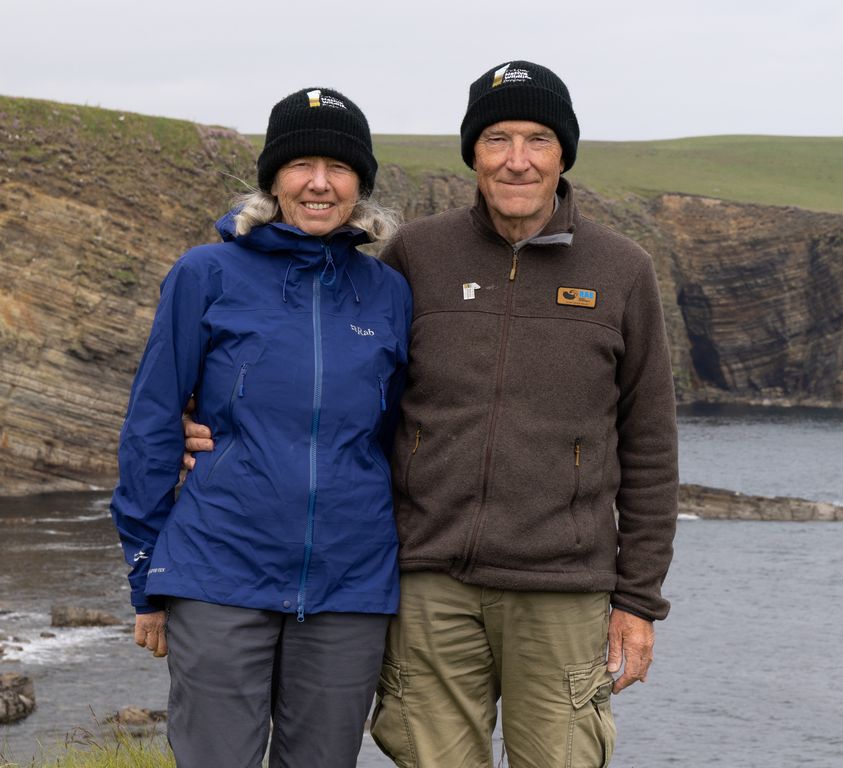
Thanks also to the landowners who gave them access to carry out these crucial tasks. To intentionally disturb nesting birds is illegal; all our nest monitoring is done under license and our fieldworkers are fully trained in what they are doing.
If you would like to get involved with volunteering for Orkney Native Wildlife Project, please do get in touch. Previous experience isn’t necessary, and we have a range of field and office-based opportunities available. For more information contact us at: [email protected] or complete the volunteering form on our website www.orkneynativewildlife.org.uk


